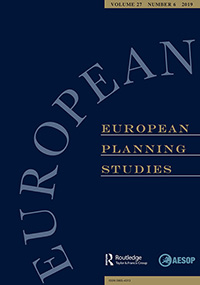
The City as a Focus for Human Capital Migration: Towards a Dynamic Analysis of University Human Capital Contributions
Universities' contributions to urban development frequently focus on their micro- or macro-scale effects, ignoring the meso-scale effects they have on inter-territorial relationships. Although universities are seen as an essential part of the recipe for successful urban development, there is a lacuna to understanding how they make places and shape urban hierarchies, and this article addresses this question. This article focuses on one university-urban development process, the creation and embedding of highly skilled graduates, to explore what the aggregate effects of universities on places are; it develops a set of indicators to measure graduate attraction and retention as well as the overall composite place effect. The article develops a typology based on these three indicator sets, and tests this using a data set developed from a Polish social media website. It finds that these indicators are a good way of measuring the effects of human capital creation and mobility at the urban scale. The article concludes by arguing that a greater focus is required in studying the roles that universities play in fostering through-flow in places, changing these places' nature as nodes within wider urban systems and hierarchies, in the context of university-regional development.




